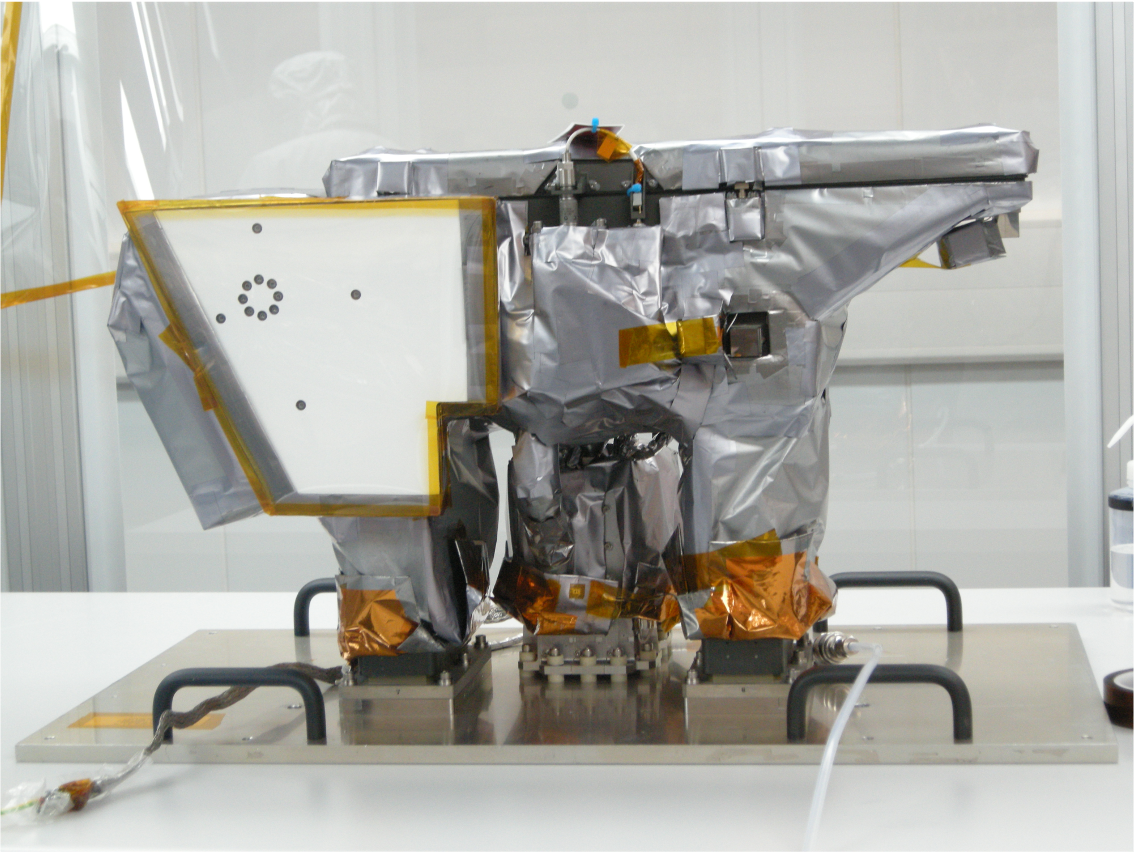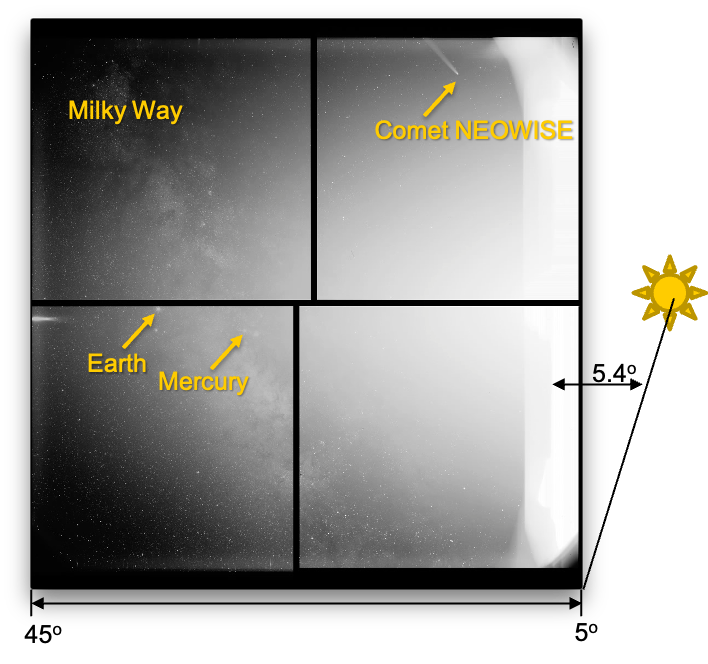The Solar Orbiter Heliospheric Imager (SoloHI) is one of the six remote-sensing instruments on Solar Orbiter. SoloHI is designed, built, and operated by the U.S. Naval Research Laboratory (NRL). It will image the inner heliosphere over a wide FOV by observing visible photospheric light scattered by electrons in the solar wind and interplanetary dust. It builds on the success of the Heliospheric Imagers (Eyles et al. 2009) in the SECCHI suite (Howard et al. 2008) of telescopes on the STEREO mission (Kaiser et al. 2008) launched in 2006.

Figure 1: View of the SoloHI instrument.
The 40° circular FOV of SoloHI is centered on the orbital plane in latitude but is offset from the Sun center by about 22.5°. Thus, the FOV spans elongations from 5.4° to 44.9° to the east of the Sun (i.e. in the anti-ram direction), as viewed by the Solar Orbiter spacecraft.

Figure 2: Image of SoloHI instrument showing its FOV elongation angles from the Sun.
SoloHI’s images capture the interplanetary medium — that is, the solar wind, dust, and cosmic rays that fill the space between the Sun and the planets. The interplanetary medium is the material that solar eruptions like CMEs travel through, so understanding it is critical to better predicting how solar eruptive events travel through space, including whether and when they will impact Earth.
Flying on Solar Orbiter places SoloHI above and below the ecliptic plane, where the interplanetary medium is the densest. This position allows researchers to track, for the first time, the longitudinal extent of a CME for much longer than is possible from a vantage point embedded inside the ecliptic. The top-down view of the Sun provides a 360-degree view of the solar equator, giving SoloHi a vantage point suitable for capturing most solar eruptions and observing co-rotating interaction regions, or CIRs. The view will allow SoloHI to track how, due to the Sun's rotation, the solar material spirals outward, tracing out what's called the Parker spiral – the spread of solar material that flows out into space in much the same shape as water flying off of a rotating sprinkler.
A movie showing the FOVs of the four SoloHI detectors with a sequence of CMEs propagating from the Sun out to the heliosphere.
You can also download this movie directly as a 82MB mp4 file.
A composite movie showing the CME propagation in SoloHI and METIS coronagraph.
You can also download this movie directly as a 52MB mp4 file.
SoloHI will image the large-scale structure of the electron corona and allow observers to follow transient structures as they propagate in the inner heliosphere and ultimately pass over Solar Orbiter or other similar instrumentation such as the Parker Solar Probe (PSP; Fox et al. 2016). The Wide Field Imager for Solar Probe (WISPR; Vourlidas et al. 2016) on PSP has similar characteristics to SoloHI. Together, SoloHI and WISPR will provide the crucial link between the remotely sensed and in situ observations from Solar Orbiter, PSP, and other inner heliospheric probes.
